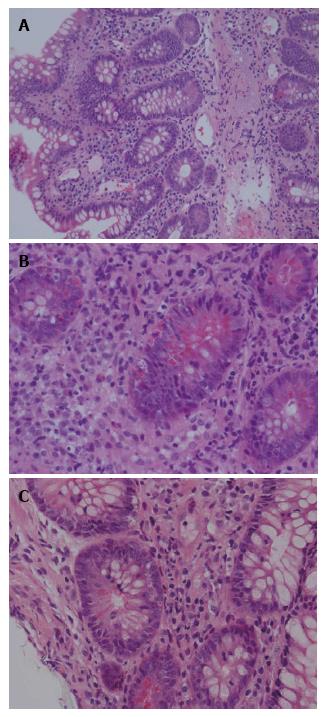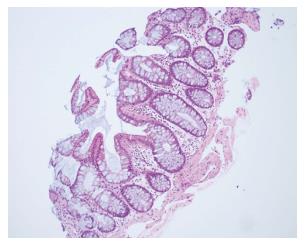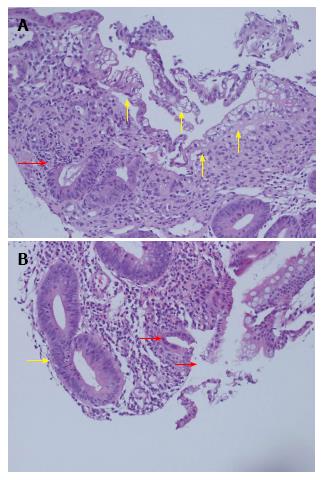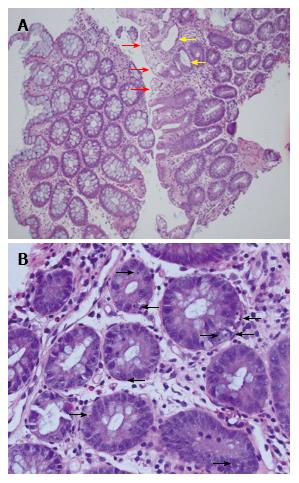Copyright
©The Author(s) 2017.
World J Transplant. Feb 24, 2017; 7(1): 98-102
Published online Feb 24, 2017. doi: 10.5500/wjt.v7.i1.98
Published online Feb 24, 2017. doi: 10.5500/wjt.v7.i1.98
Figure 1 Small bowel allograft biopsy - day 13.
A: Increased lamina propria inflammatory infiltrate, including activated cells, regenerative basophilia of crypt epithelium and increased epithelial apoptosis; B: High power view increased crypt apoptosis and rejection type inflammatory infiltrate within the lamina propria; C: Focal confluent apoptosis in a single crypt.
Figure 2 Native colonic biopsy - day 13.
Unremarkable mucosa with preserved surface and crypt architecture with no significant inflammation and no crypt apoptosis.
Figure 3 Small bowel allograft biopsy - day 23.
A: Mucosal erosion with marked surface enterocyte degeneration and cytoplasmic vacuolation, sloughing (yellow arrows), inflamed granulation-like tissue within the lamina propria, prominent crypt injury (red arrow) and focal drop out; B: Cryptitis with increased epithelial apoptosis (yellow arrow), mixed lamina propria inflammatory infiltrate and surface epithelial erosion (red arrows).
Figure 4 Native colonic biopsy - day 23.
A: Striking focal surface epithelial vacuolation/degeneration (red arrows), associated with crypt epithelial injury, crypt withering and goblet cell reduction (yellow arrows); B: High power view - basal crypts with mucin reduction, increased basophilia and several apoptotic bodies (black arrows).
- Citation: Apostolov R, Asadi K, Lokan J, Kam N, Testro A. Mycophenolate mofetil toxicity mimicking acute cellular rejection in a small intestinal transplant. World J Transplant 2017; 7(1): 98-102
- URL: https://www.wjgnet.com/2220-3230/full/v7/i1/98.htm
- DOI: https://dx.doi.org/10.5500/wjt.v7.i1.98












